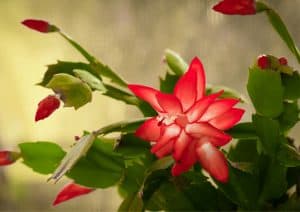12 Tall Office Plants That Thrive In Low Light Conditions
- Lakeisha Ethans
- March 20, 2022
If you buy something using the retail links in our articles, sometimes we earn a small affiliate commission. This does not impact the products we recommend.
A monochromatic, monotonous office environment can benefit from a little bit of greenery. Plenty of indoor plants can survive in a low-light environment, but few of them grow tall. This is because growth in plants is usually associated with direct, full sunlight access, which most indoor plants have to do without.
But that doesn’t mean that there are no tall plants you can grow in an office. Of course, buying tall plants at their full growth can be expensive. As such, you may want to opt for plants that will grow relatively quickly and experience good heights in a brief span of time. This is quite the tall order for a low-light office, but it’s doable with patience!
In this article, we’ll cover a few types of indoor plants that can live in low light and still grow tall in your office.
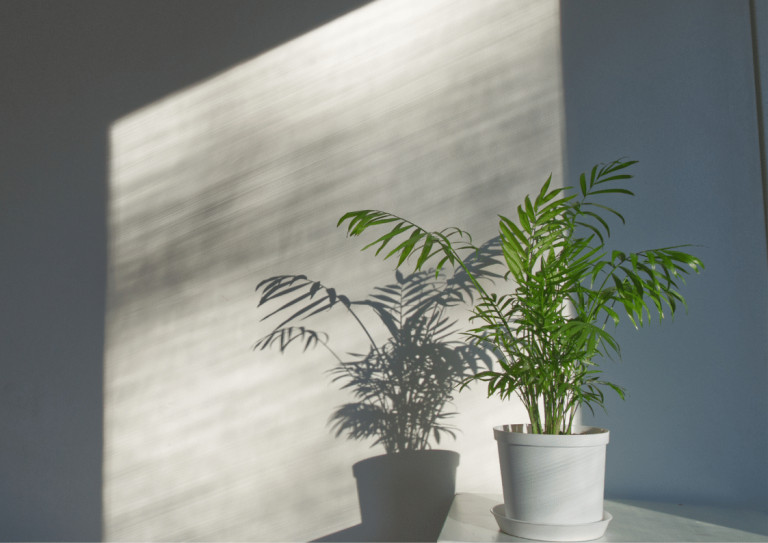
1. Corn Plant
Corn plants, also known as Dracaena fragrans, are known for their silhouettes akin to palms. They do well with a mix of different lighting types, but they require little more than filtered sunlight and can grow well in low-light conditions. This has made them quite valued as indoor plants.
Corn plants can grow to six feet and taller, boasting beautiful striped four-inch leaves. They help to filter out various chemicals in indoor environments. Better yet, these plants are low-maintenance and can survive well when under-watered. Though they will grow fastest with bright, indirect light, they’ll still do just fine without it.
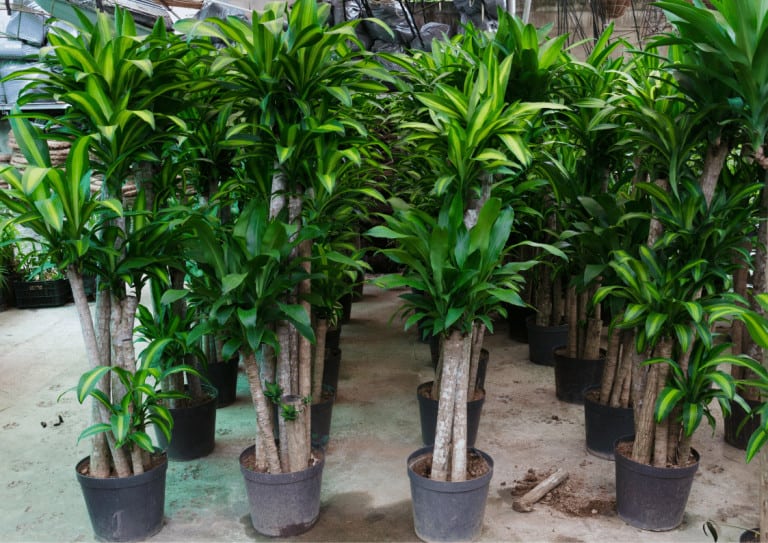
2. Money Tree
A common indoor plant, the Money tree, or Pachira aquatica, does not enjoy direct sunlight, preferring indirect bright lighting. It can also adapt relatively well to shaded environments as long as the temperature doesn’t get too hot or cold.
In the wild, Money trees grow to a whopping 60 feet in size. Of course, they’re unlikely to achieve that growth indoors, but they still end up pretty tall!
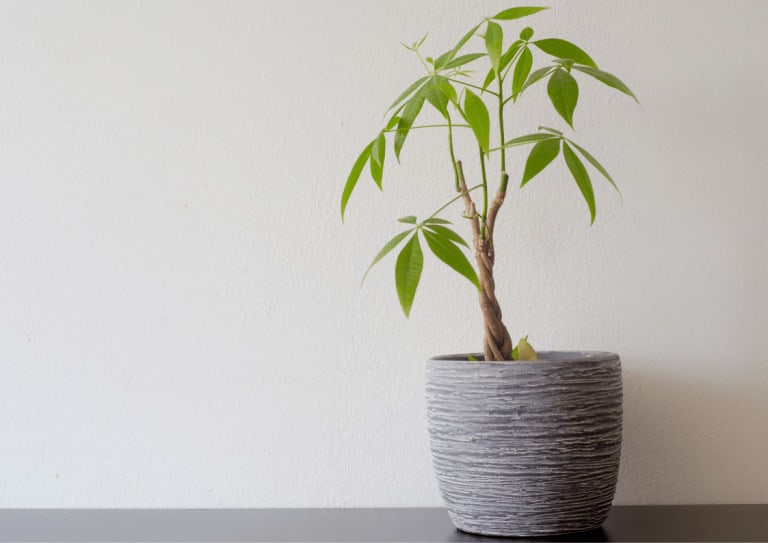
3. Monstera
The Monstera, also known as the Swiss Cheese Plant, is an incredibly popular indoor plant. It’s suited to lower light environments because of its natural rainforest habitat, where it is often in the shade beneath larger trees and has to grow upwards to seek filtered sunshine.
Beautiful with enormous leaves, the Monstera deliciosa rarely grows well in direct light. Bright, indirect light is the way to go for this flora. Dim light works well, too. Do note that as tall as they are, Monsteras are also wide and will grow both height-wise and sideways, so you’ll need enough space for them!
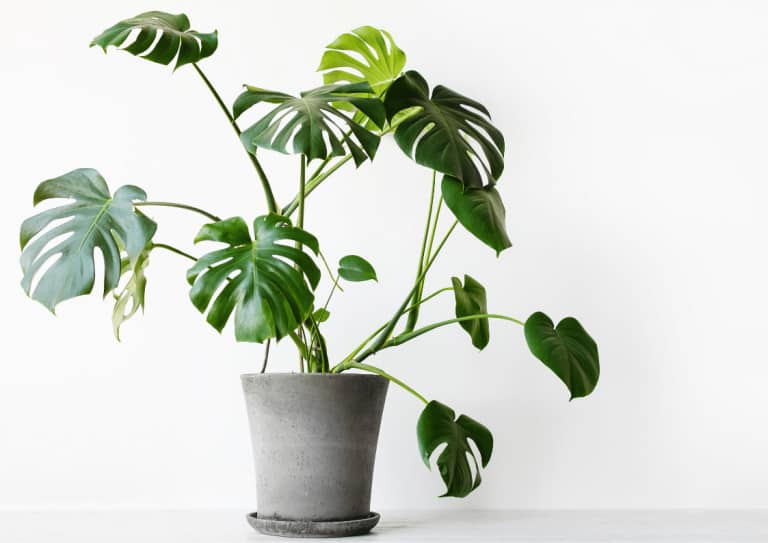
4. Parlor Palm
The Parlor palm earned its name because it’s suited for “parlors”. That is, the plant, scientifically called the Chamaedorea elegans, survived beautifully in dark homes during the Victorian era. These plants thrive in moderate lighting without direct sunlight and can grow up to an impressive 6 feet in height.
It is worth noting that Parlor palms grow somewhat slowly. They’re perfect for dark spaces, but that comes at the cost of that speed.
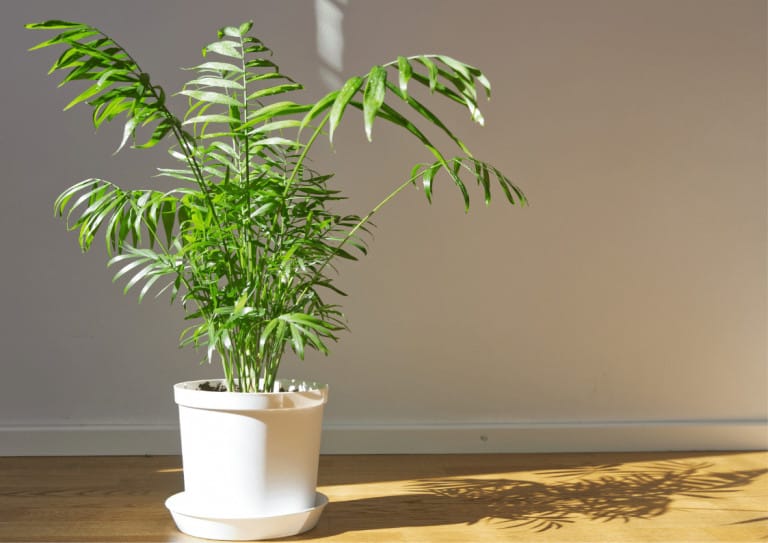
5. Rhapis Palm
The Rhapis palm, or Rhapis excelsia, is often referred to as a Finger palm. Originally from Asia, the palm has become popular in other countries and America because it requires little light and low humidity. This means that it can often be found in offices and malls.
The Rhapis palm only requires indirect sunlight and grows to a fairly impressive height. After all, the word “excelsia” means “tall” in Latin! The exact resulting height will depend on how much sunlight it gets. If you want a lot of growth, an east-facing window is a good spot for this palm. It’ll do well with low light regardless and will still end up quite tall!
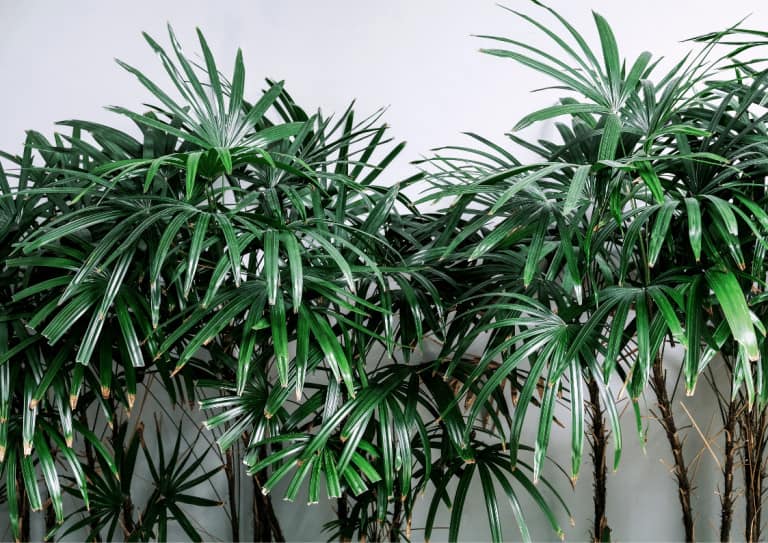
6. Dragon Tree
The Dracaena marginata, or Dragon tree, is a spindly, tall plant that takes well to indoor environments. These trees are related to the aforementioned Corn plant, too! They dislike direct exposure to sunlight and prefer bright, indirect light. They can also survive in low-light environments, though their already thin stems will get even more rapidly in those circumstances, so keep that in mind for your office!
Dragon trees have impressive growth, reaching heights of 10 feet. Indoors, they may not grow completely straight, but they’ll still be obviously tall. If your Dragon tree’s leaves start to drop, that’s a sign that more sunlight is needed.
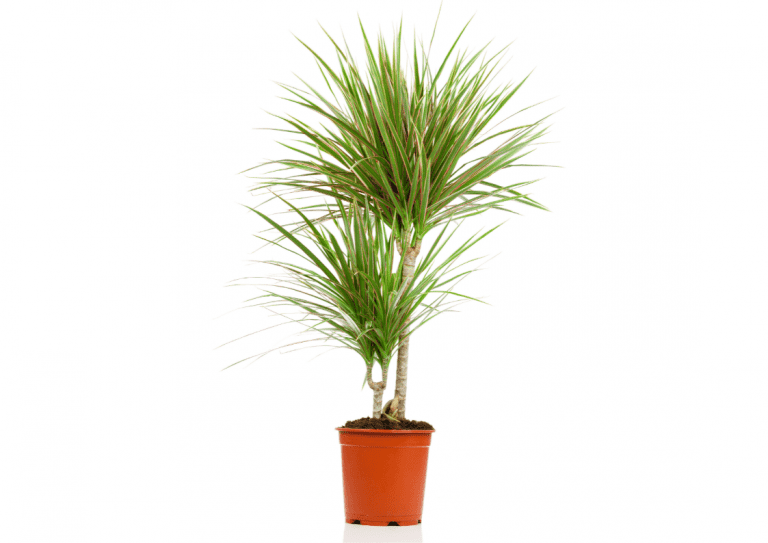
7. Rubber Plant
The Rubber plant or Ficus elastica grows quickly but can be tricky for first-time plant owners, as it cannot tolerate too much mistreatment. This majestic plant can reach 10 feet in height, boasting long leaves with a beautiful and elegant gloss.
The Rubber plant likes bright light but does okay with indirect lighting. It can also adapt to lower light environments, though it will grow more slowly in those conditions. Regardless, the quick-growing speed means that a slight hiccup in that pace isn’t too noticeable and the results are still rewarding.
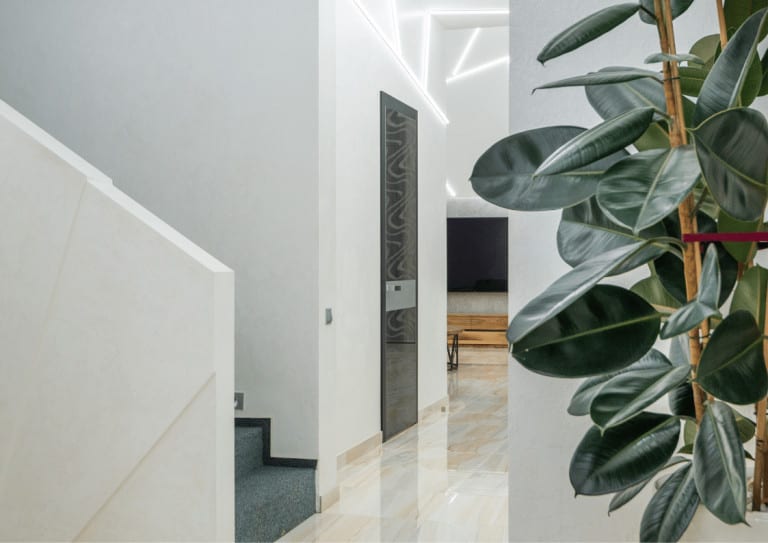
8. African Milk Tree
The African Milk tree, or Euphorbia trigona, is a succulent that grows to an impressive height. It’s a great option for those who want a tall plant that’s more unique. A warm environment is preferable for their growth, and you’ll be rewarded by several stems that grow upwards for more height.
The African Milk tree enjoys bright indirect light and can hit a whopping eight feet indoors. Expect them to get sort of top-heavy; if that’s a problem, you may need to stake this flora down or trim the tallest parts!
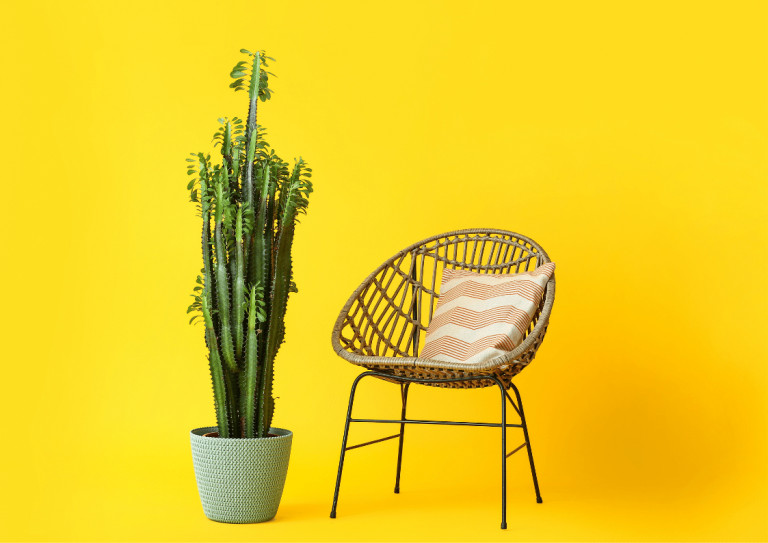
9. Umbrella Plant
Scientifically named the Schefflera actinophylla, the Umbrella plant doesn’t look like it’d grow very tall at first glance – but looks can be deceiving! They can grow to a whopping 10 feet or so when kept inside. You can even encourage additional growth by pruning their tallest tops, which will make for bushier leaves.
The Umbrella plant likes indirect, bright light, and it should be rotated on a semi-regular basis so all of its sides get some of that shine. Unfortunately, this plant may not achieve the best growth in very dark environments, so keep that in mind if you don’t have access to a window at your office.
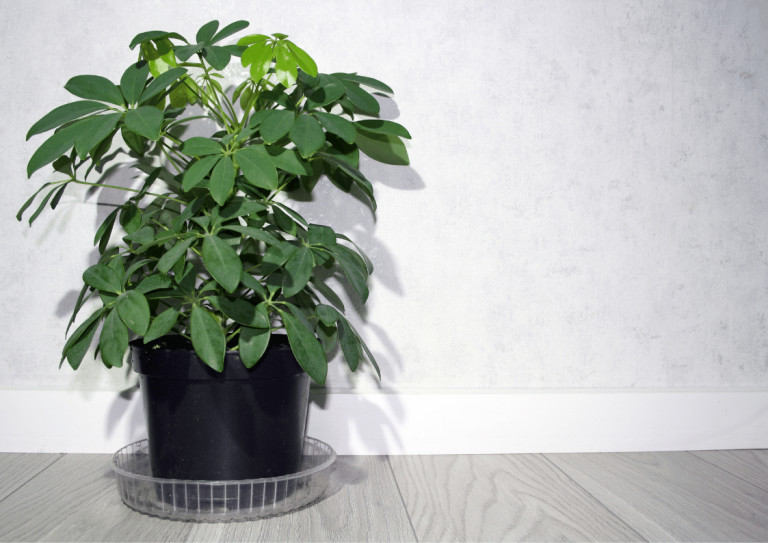
10. Weeping Fig
The Weeping fig grows to incredible heights outdoors, but indoors, they can reach a respectable six feet easily. Also known as Ficus benjamina, it can sometimes even become too big for its indoor environment, requiring regular pruning to keep in check. Although it’s been found to be great at cleaning indoor air, people suffering with allergies should think twice before placing this beauty indoors.
The Weeping fig is quite popular as an indoor houseplant. It prefers bright, indirect light, but it’s able to thrive in the shade. In fact, if moved away from sunlight, it will drop its current leaves and regrow them to replace them with more adaptable foliage.
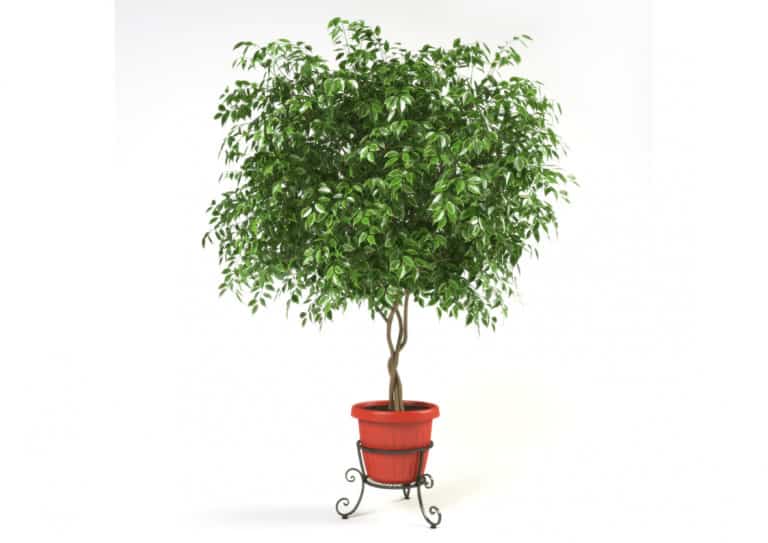
11. Ponytail Palm
The Ponytail palm, also known by the names Elephant’s foot and Beaucarnea recurvata, is a great low-maintenance plant for an office environment. They like indirect bright light and can do well in partially shady environments. They’ll adapt pretty well to a low-light office as well.
Ponytail palms do not grow quickly, but they do grow very tall and can reach heights of 30 feet if you’re patient enough. Even indoors, without enough light, they can hit 4 feet at a fairly impressive rate. They don’t require much water and survive even when neglected, so they’re great for those who don’t go to their office that often.
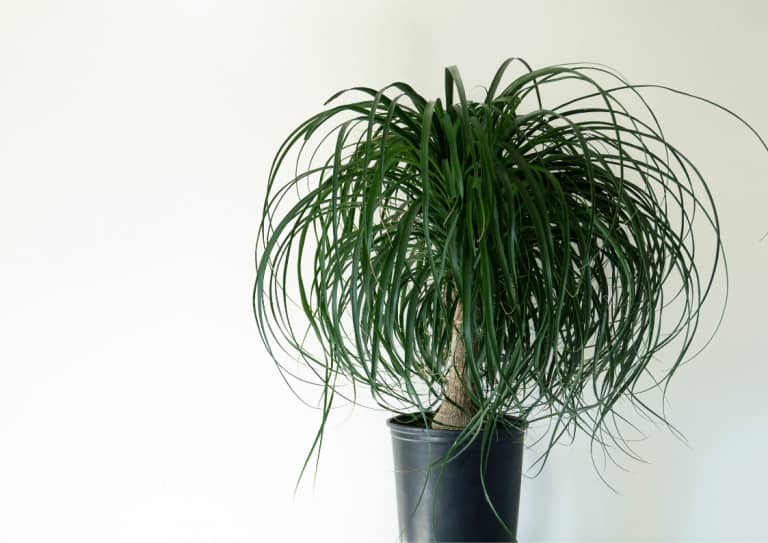
12. Kentia Palm
Yet another palm on this list, the Howea forsteriana is surprisingly hardy. It’s a popular office plant because it thrives on low light (or indirect light). Its upright appearance with arched leaves makes for an elegant appearance that you’d most commonly see in bright environments. This makes its indoor compatibility all the more impressive.
This low-maintenance plant is ideal for dark corners and doesn’t need much care. It even grows pretty quickly and can reach 10 feet in height. Bright, indirect sunlight will allow it to grow even faster if you have access to it
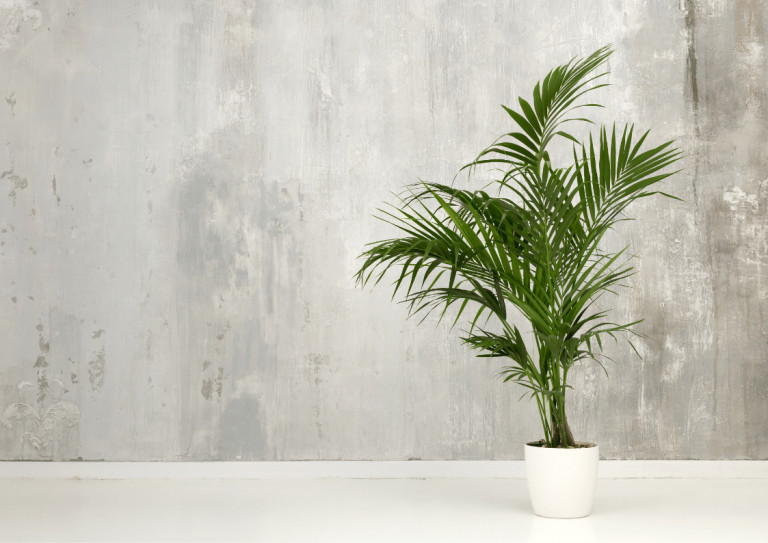

Lakeisha Ethans
Houseplant Writer
Mother to two humans and hundreds of plant babies. Lakeisha uses her 15 years of experience as a content writer to specialise in simplifying what you need to know to grow and care for all indoor plants.
Similar Posts
Do Christmas Cactus Flowers Change Colors?
One year, your Christmas cactus flowers are yellow, but the next, they've turned pink. Why does this happen and is it a cause for concern?
Do Indoor Plants Turn Harmful At Night? (CO2 Concentration Analyzed)
In the absence of light, plants are unable to produce oxygen yet continue to respire and release carbon dioxide. Does this make our houseplants harmful?

